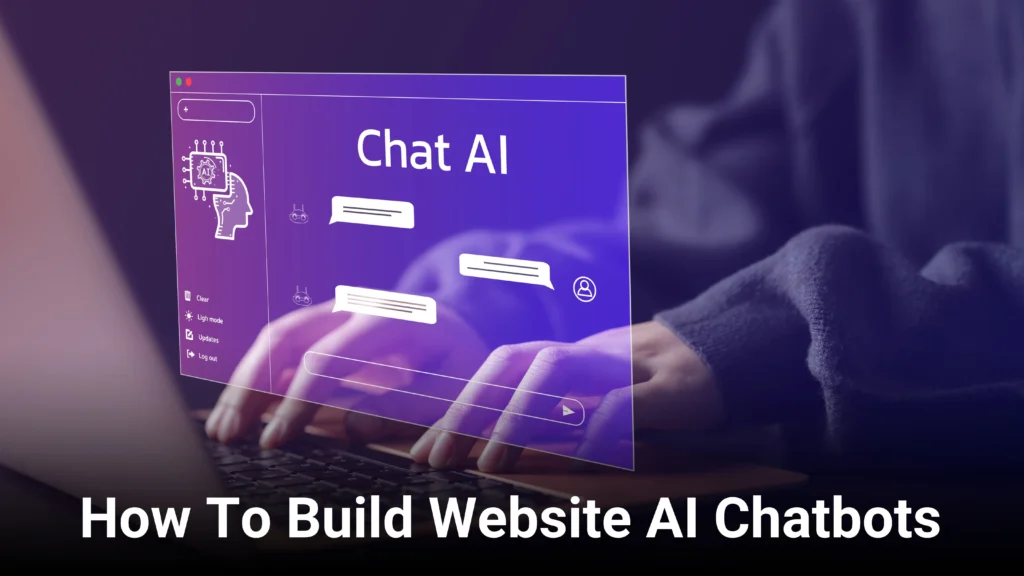“Turn your website into a 24/7 assistant with AI.”
Imagine having a virtual assistant on your website who is available around the clock to assist consumers, respond to queries, and even close deals while you are asleep. That is an AI chatbot’s power. Thanks to developments in artificial intelligence, developing an AI chatbot is no longer a difficult task reserved for tech experts. It is an essential tool for companies looking to enhance consumer engagement and experience.
We will go into great detail in this article on how to create an AI chatbot for your website, step-by-step, with useful examples and helpful advice. Everything you need is right here, regardless of your level of experience or want to improve your current chatbot. Additionally, focusing on the creation of “AI Chatbot” and “website making using AI,” we will examine how AI can transform the process of creating websites.
What is an AI Chatbot?
A software program that mimics human-like communication with people by using artificial intelligence is known as an AI chatbot. Using sophisticated machine learning models or pre-established rules, it can comprehend, process, and react to speech or text inputs. To provide immediate, automated assistance, respond to inquiries, and complete tasks quickly, AI chatbots are frequently utilized in customer service, e-commerce, healthcare, education, and other fields.
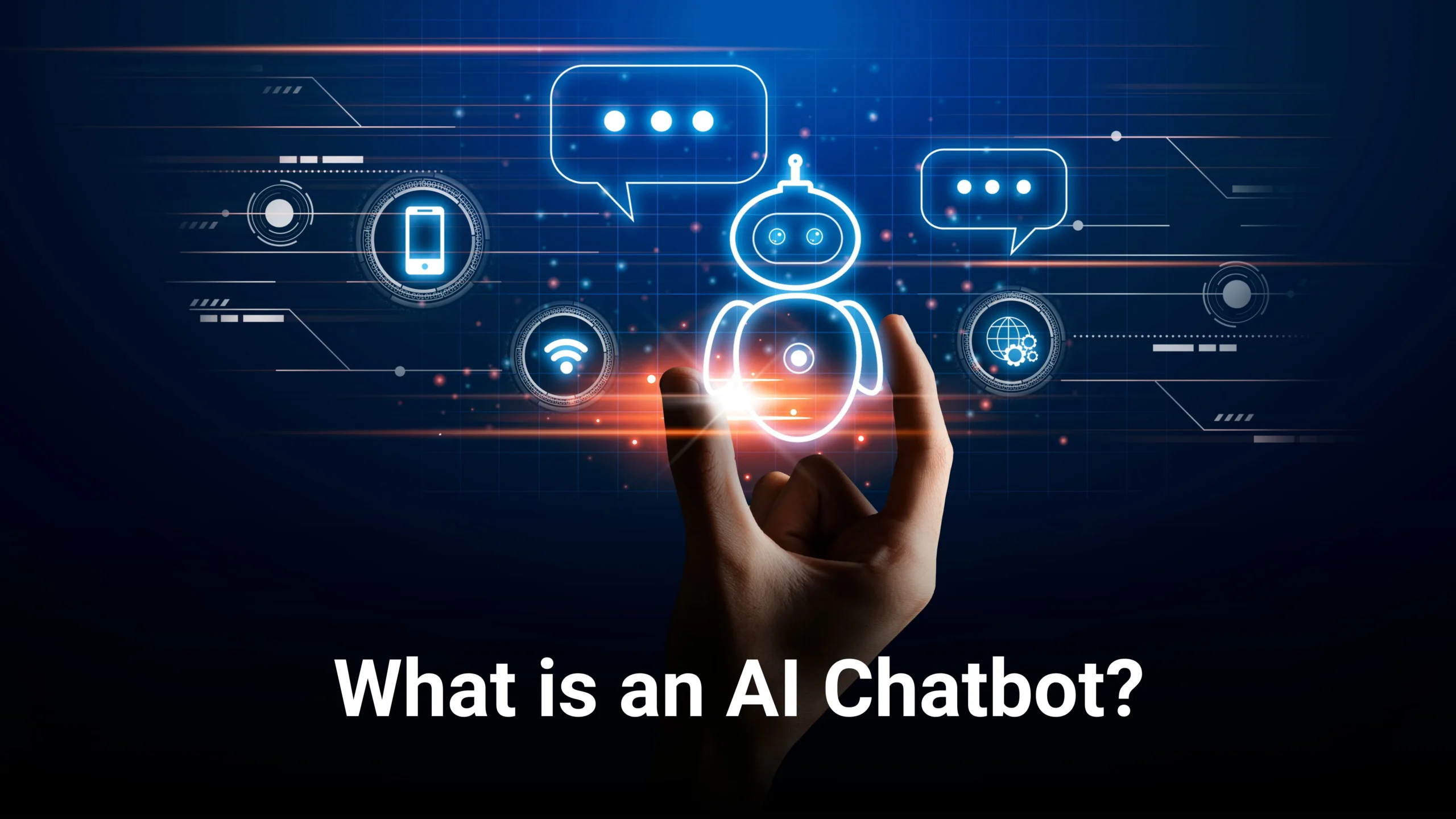
Why Use an AI Chatbot for Your Website?
AI chatbots are transforming the way companies communicate with their clientele. Here are some reasons to think about including one on your website:
- 24/7 Availability: A Drift survey found that 64% of users think that chatbots’ capacity to offer round-the-clock assistance is their best feature.
- Better Customer Experience: According to research, 90% of consumers anticipate receiving a prompt answer to their queries. AI chatbots enable this.
- Cost Savings: According to IBM, companies that use chatbots can reduce their customer care expenses by up to 30%.
- Scalability: A chatbot can manage ten thousand queries with ease.
Steps to Build an AI Chatbot for your Website
Creating an AI chatbot for your website may expedite interactions, offer round-the-clock customer service, and greatly increase user engagement. This comprehensive, step-by-step guide will assist you in developing a successful AI chatbot:
1. Specify the objectives and purpose of your chatbot
Clearly state your goals for your chatbot before you start developing it. Think about the following goals:
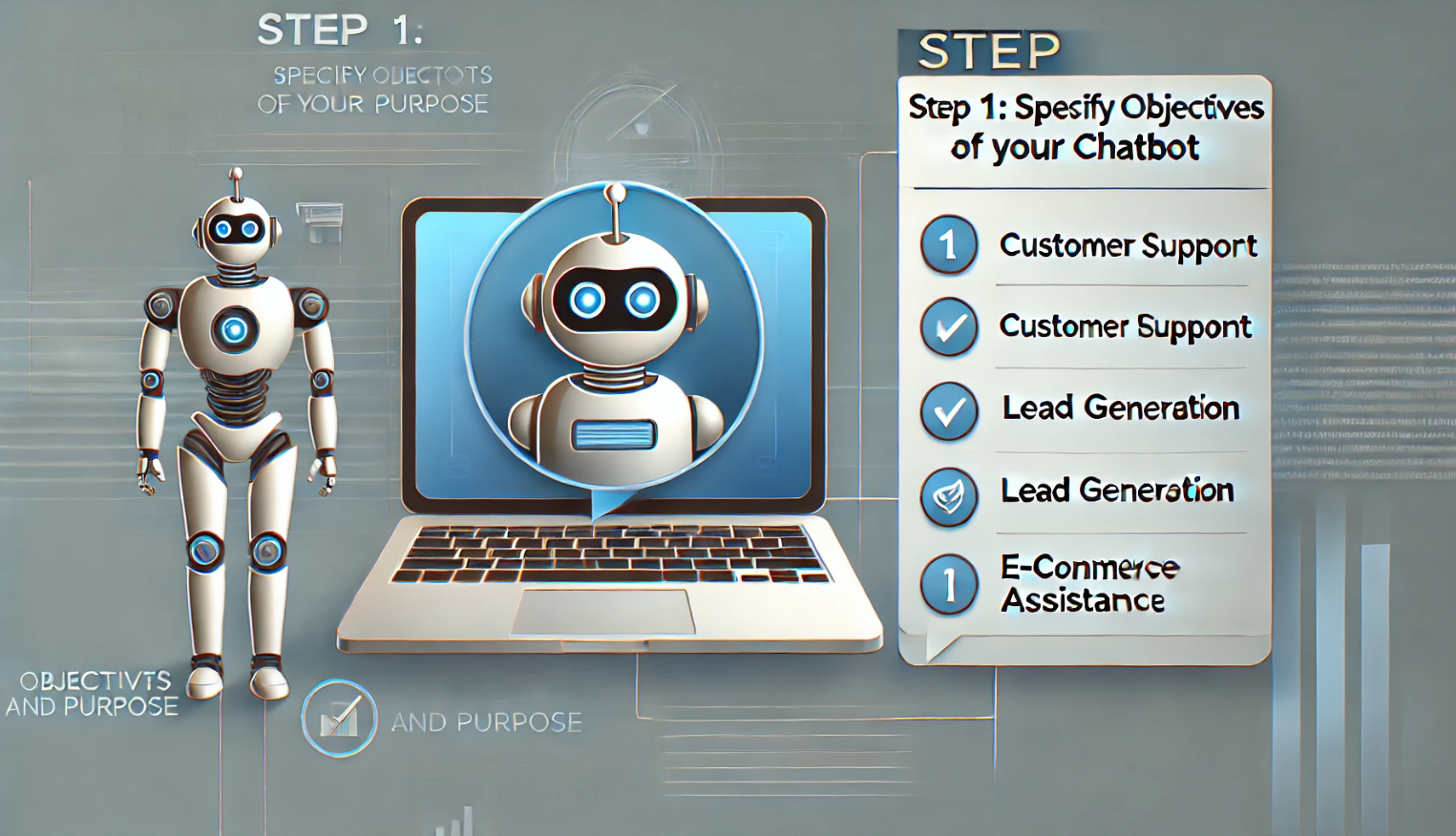
- Customer service: Offering prompt responses to frequently asked questions.
- Lead Generation: Gathering user data for potential customers.
- Help with e-commerce: Assisting customers with product selection and acquisition.
- Appointment Scheduling: Enabling users to make direct service reservations via the chatbot.
Knowing the main purpose of your chatbot will help you build and implement it.
2. Select the Appropriate AI Chatbot Platform
It is critical to choose a platform that complements your technical proficiency and commercial requirements. Here are a few well-liked choices:
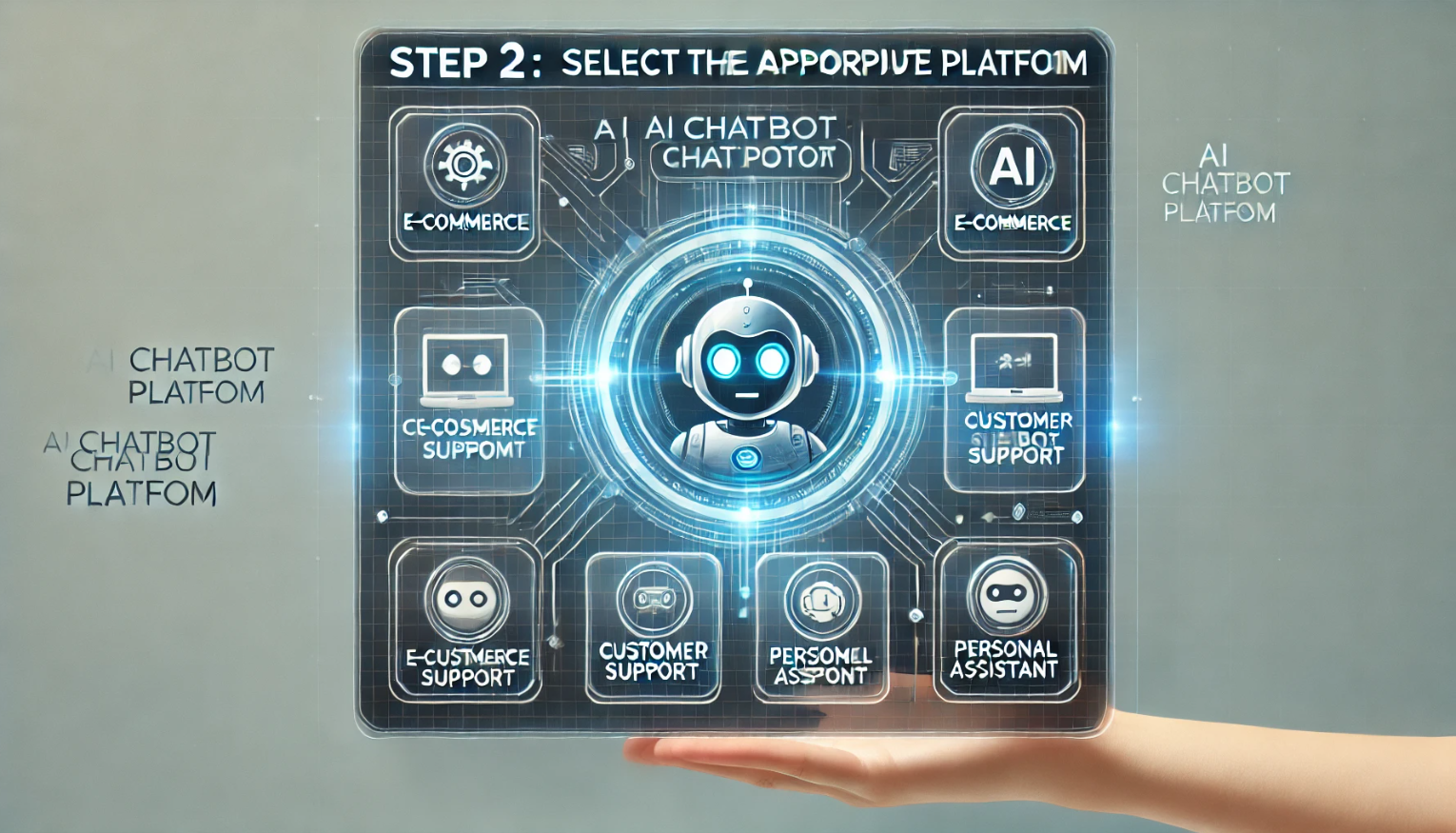
Chatbot.com
A user-friendly interface for creating customizable chatbots without knowing any code is provided by ChatBot.com.
Dialog Flow
Google’s tool for building bots with natural language processing (NLP) that can handle sophisticated interactions.
Tidio
Tidio is perfect for small and medium-sized organizations since it combines live chat with AI-driven automation.
Botsonic
An AI chatbot builder that enables customized interactions and training on your own data.
Chatbase
Chatbase offers smooth website integration and makes it possible to create AI chatbots that have been trained on your data.
3. Design the Flow of the Conversation
Outline the expected course of user-chatbot interactions. Consider:
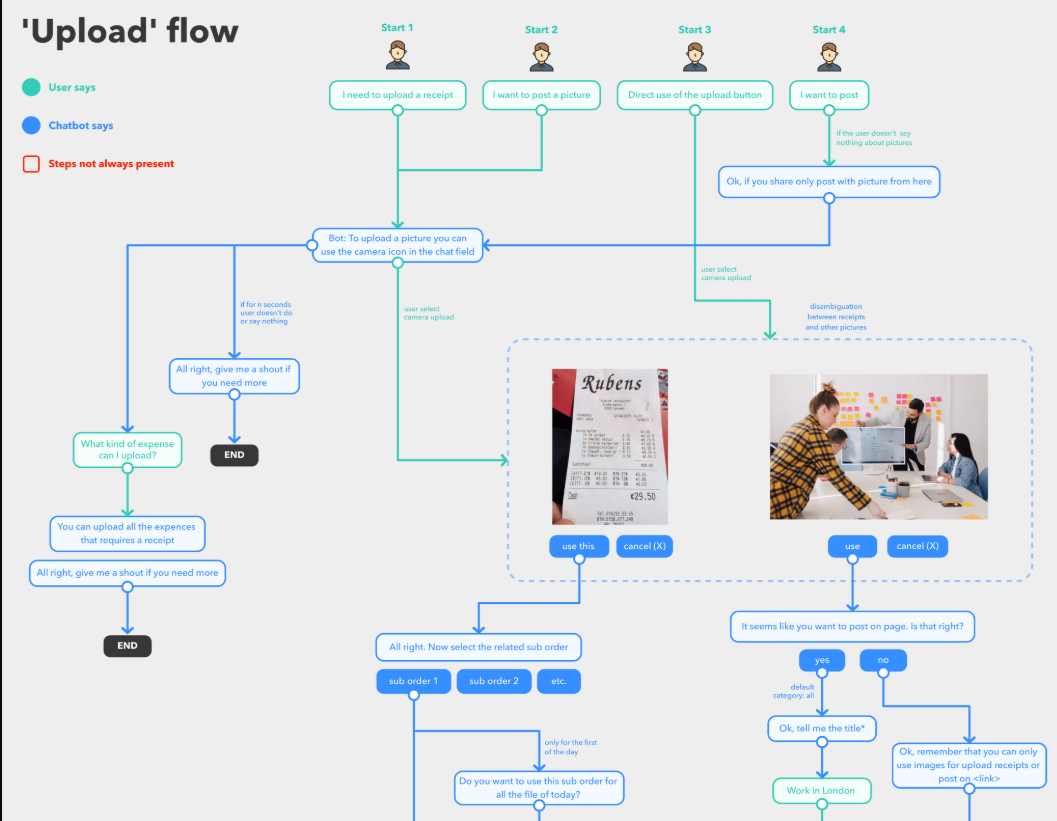
- Greetings: Create a warm and inviting introduction since first impressions count.
- Identification of User Intent: Foresee frequently asked queries and create routes to answer them.
- Fallback Responses: Get answers ready for inputs that are not recognized so that users can get back on course.
- Human Handoff: When required, create a smooth handover to human agents.
flowcharts and other visual aids can help with efficiently organizing these exchanges.
4. Develop and Train the Chatbot
Build the chatbot using the platform of your choice:
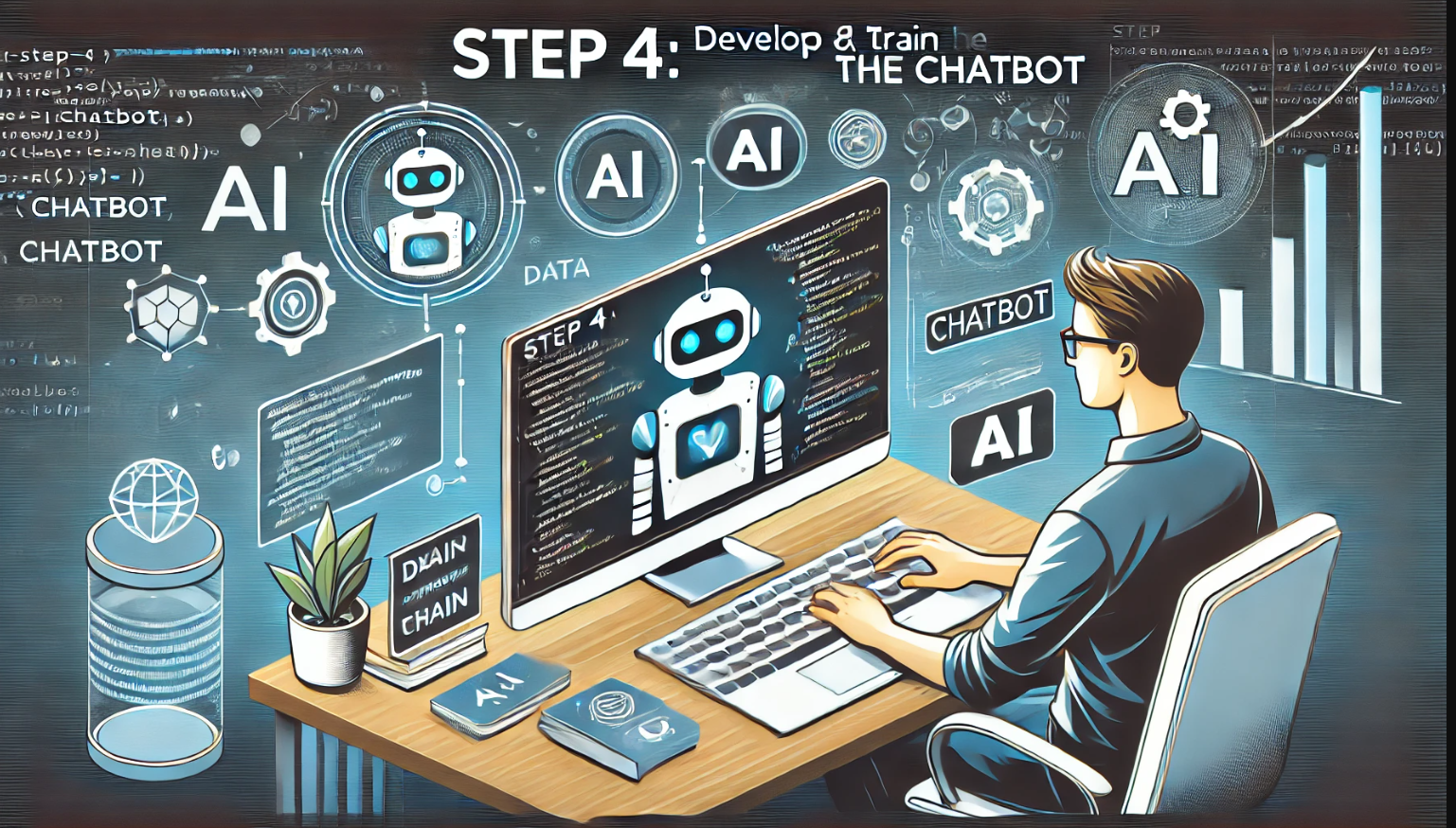
- Integrate Data Sources: To help guide answers, provide product details, frequently asked questions, and other relevant data.
- Natural Language Processing: Use natural language processing (NLP) to teach the chatbot to correctly comprehend and process user input.
- Machine Learning: Give the chatbot the ability to pick up knowledge from conversations so it can get better over time.
For example, you can train your bot by scanning the URL of your website using platforms such as ChatBot.com, which automatically collects information to produce responses.
5. Test the Chatbot Thoroughly
To guarantee functionality, carry out thorough testing prior to deployment:
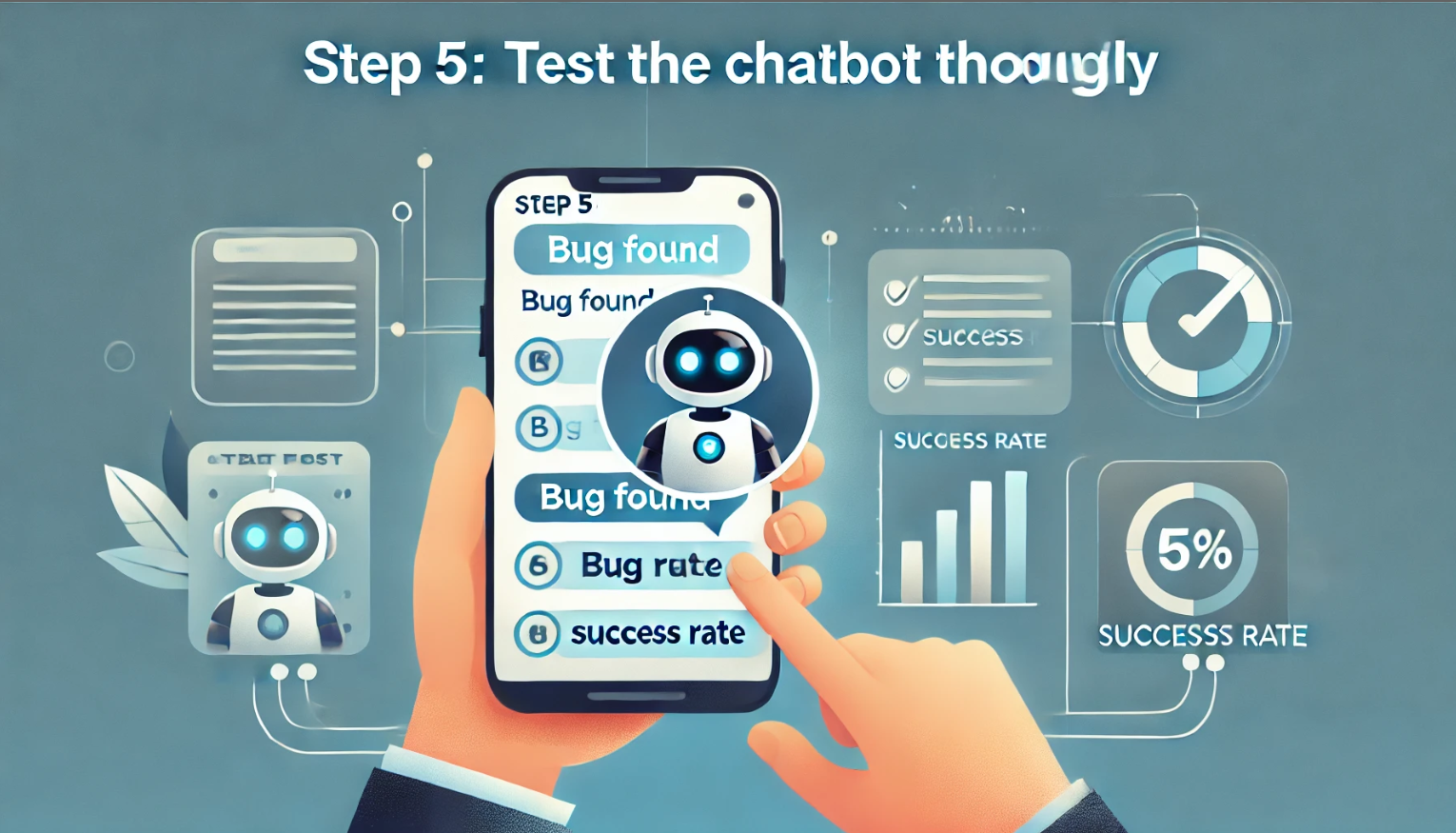
- Simulate User Interactions: Evaluate answers by simulating user interactions and testing different scenarios.
- Find and Fix Problems: Take care of any misunderstandings or dead ends in the discourse.
- User Feedback: To get insights, think about conducting beta testing with actual users. Platform-provided testing tools can make this process easier.
6. Integrate Your Website with the Chatbot
After being pleased with how it performed:
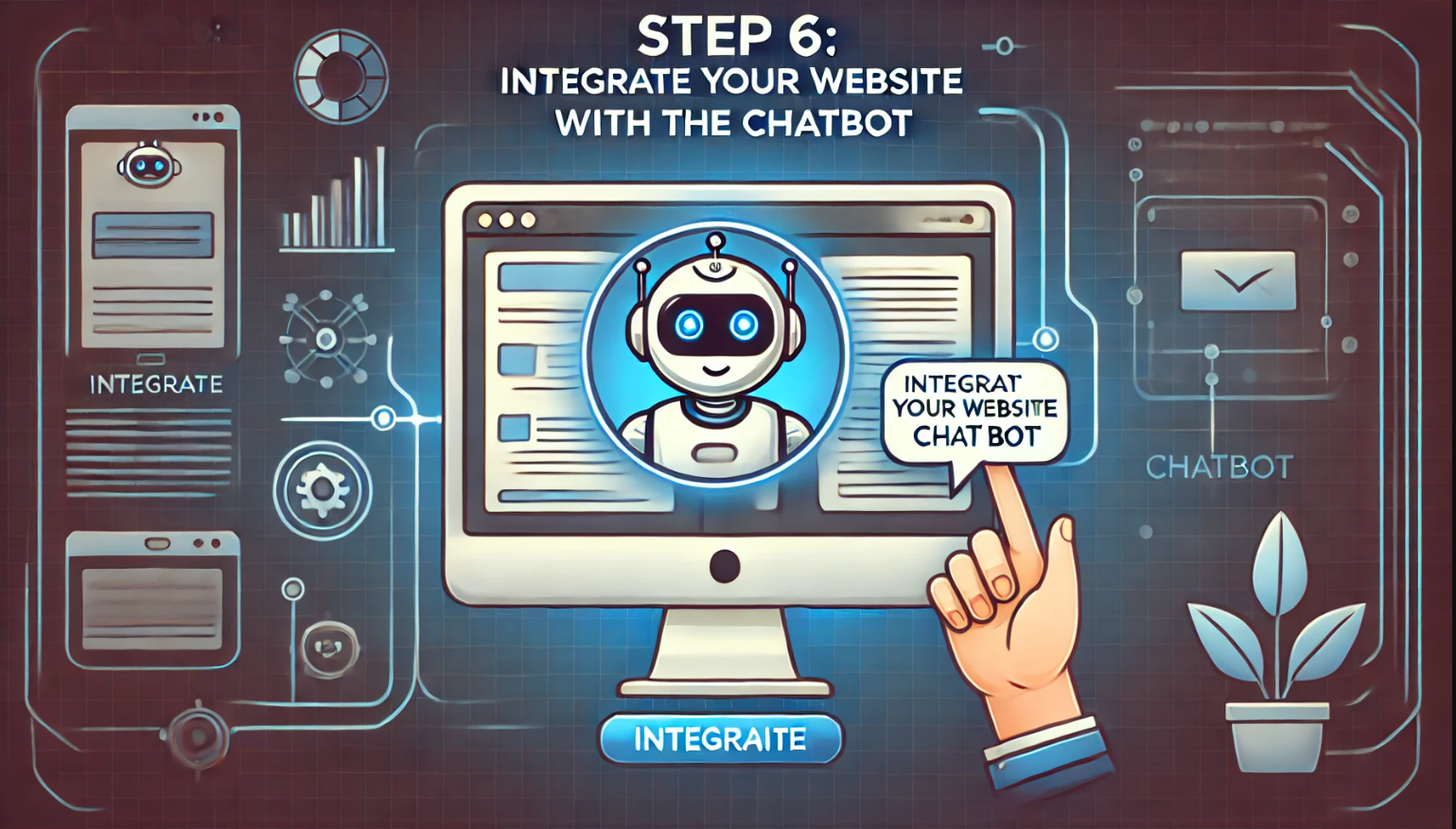
- Integration: Use the supplied plugins or embed codes to incorporate the chatbot into your website.
- Customization of the User Interface: Make sure the chatbot complements the visual style of your website.
- Accessibility: Place the chatbot in a visible location without interfering with the user’s experience.
Elfsight, for instance, provides an AI Chatbot widget that is easily customizable and incorporated into your website.
7. Track and Improve Performance
After deployment:
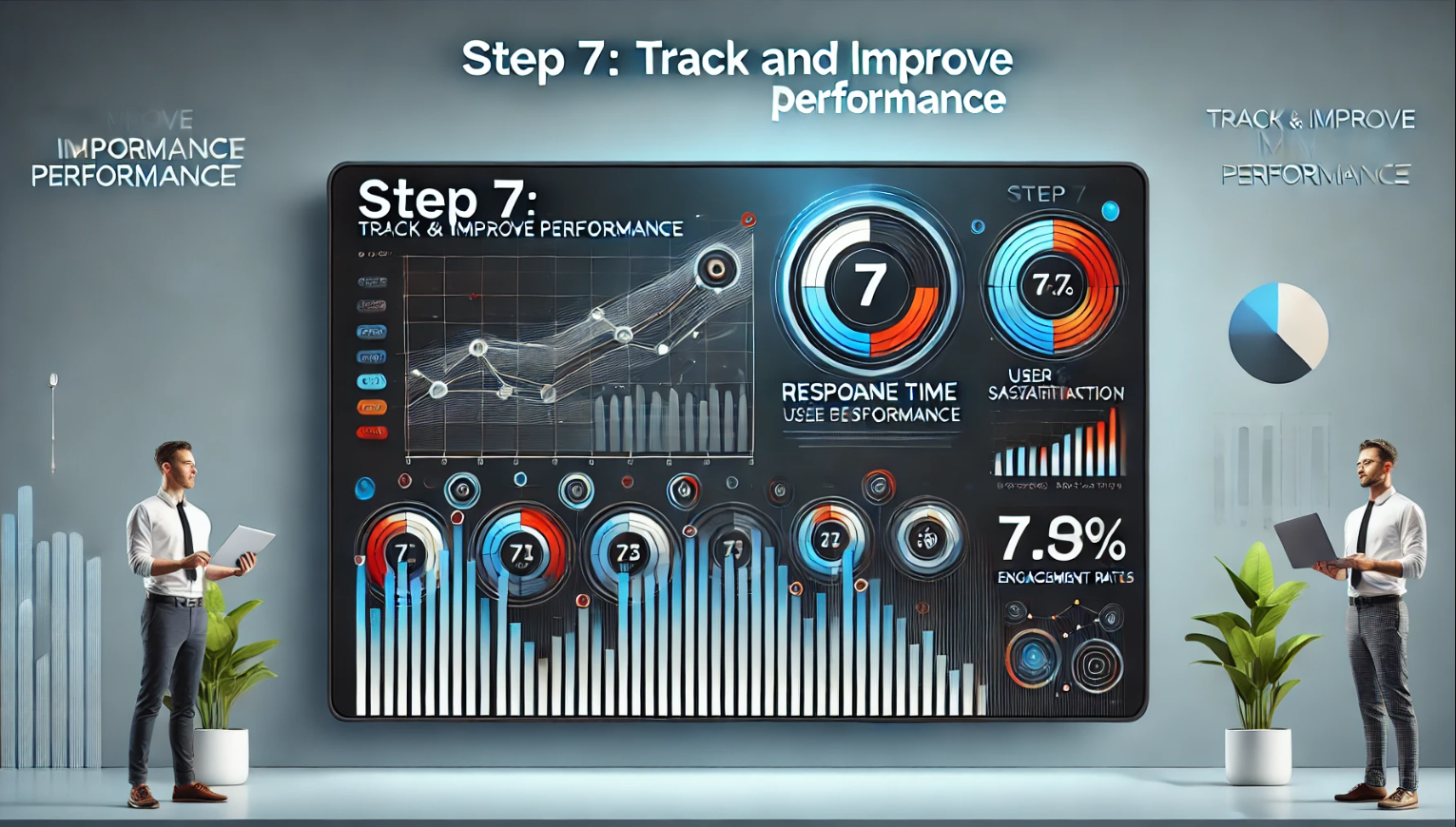
- Analytics: Monitor user interactions, frequently asked questions, and engagement indicators.
- Constant Improvement: Modify the chatbot’s knowledge base and enhance its responses in response to user input and behavior.
- Adapt to Trends: Adjust the chatbot to meet new user requirements or corporate goals.
Frequent monitoring guarantees the chatbot’s continued usefulness and relevance.
8. Assure Security and Compliance
Preserve user information and adhere to rules:
- Data privacy: Implement the required consent procedures to comply with legislation like the GDPR.
- Security precautions: Prevent illegal access and data breaches.
- Transparency: Let users know when they are speaking with a chatbot and give them ways to get in touch with customer service.
You can create an AI chatbot that improves user experience, increases operational efficiency, and adds value to your website by following these comprehensive steps.
“From concept to launch: Build your AI chatbot today!”
How AI Simplifies Website Creation
AI is changing website development in addition to chatbots. Here’s how:
- Automated Design: Professional designs are produced in a matter of minutes by programs like Wix ADI and Bookmark’s AI Website Builder.
- Content Creation: SEO-friendly website content can be produced using AI systems such as copy.ai.
- Personalization: AI monitors user activity to tailor online experiences.
Consider this statistic: Gartner predicts that by 2025, AI-driven solutions will be used in the development of 80% of technological goods.
Best Practices for AI Chatbot Implementation
- Keep It Easy: Do not overburden your chatbot with inessential functionality.
- Provide an Escape Route: Always provide users the option to speak to a human agent.
- Always Strive for Improvement: Over time, use data to improve your chatbot.
Key Benefits of Using an AI Chatbot
- Increased Conversions: According to a study by Intercom, chatbots can increase conversion rates by 10–20%.
- Improved User Engagement: AI chatbots improve user involvement on websites by 50%.
- Benefits for SEO: Chatbots increase dwell time and lower bounce rates, two factors that are critical to SEO.
Conclusion: Get Started with Your AI Chatbot Today
AI chatbot development does not have to be difficult. You may develop a chatbot that revolutionizes the user experience on your website if you have specific objectives, the appropriate platform, and a data-driven strategy. While you are at it, investigate how artificial intelligence (AI) may transform website development and improve the intelligence and effectiveness of your online presence.
Do you want to maintain your competitive edge? Get started with AI chatbots now, and see how many more people visit your website!

